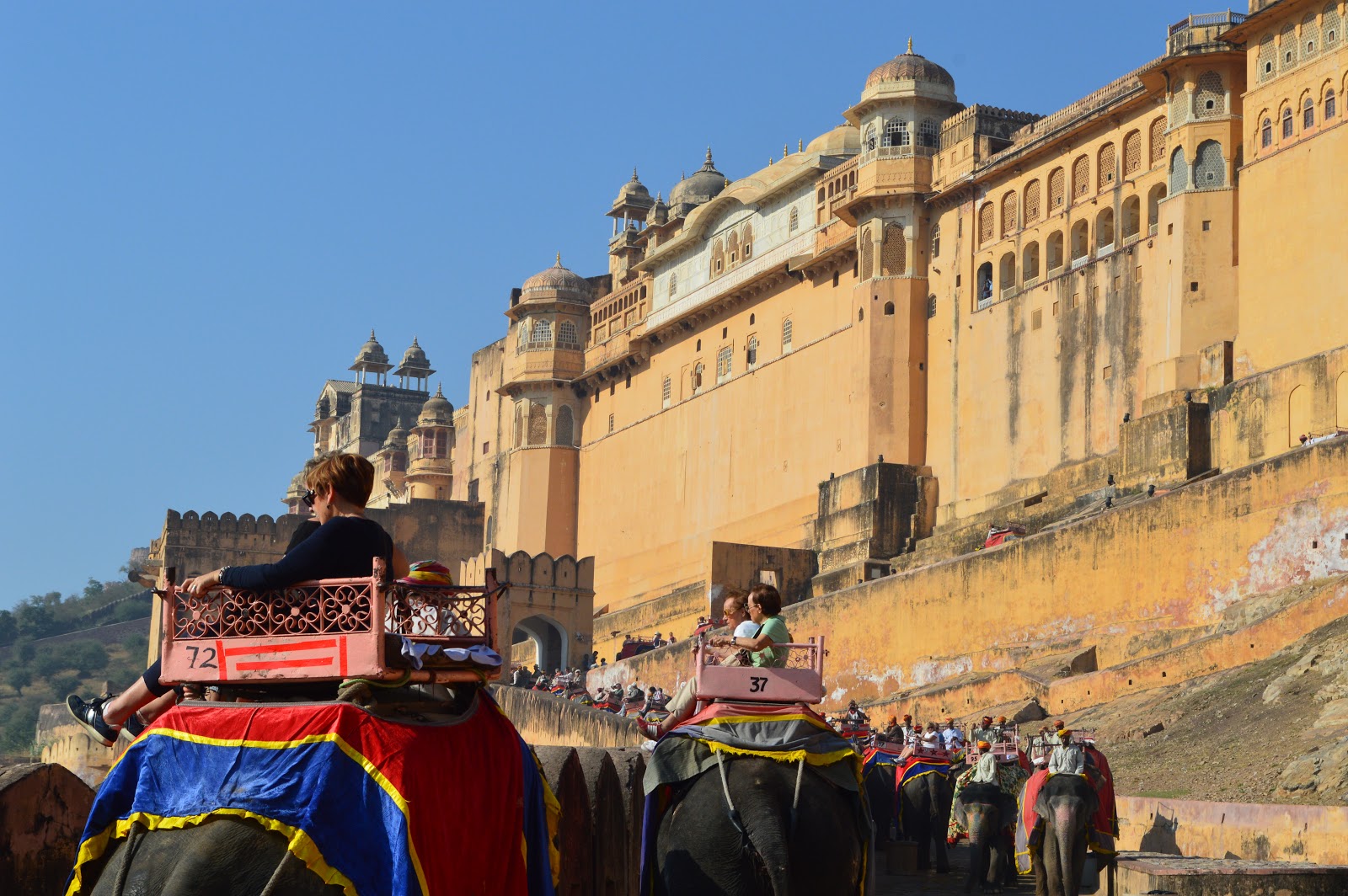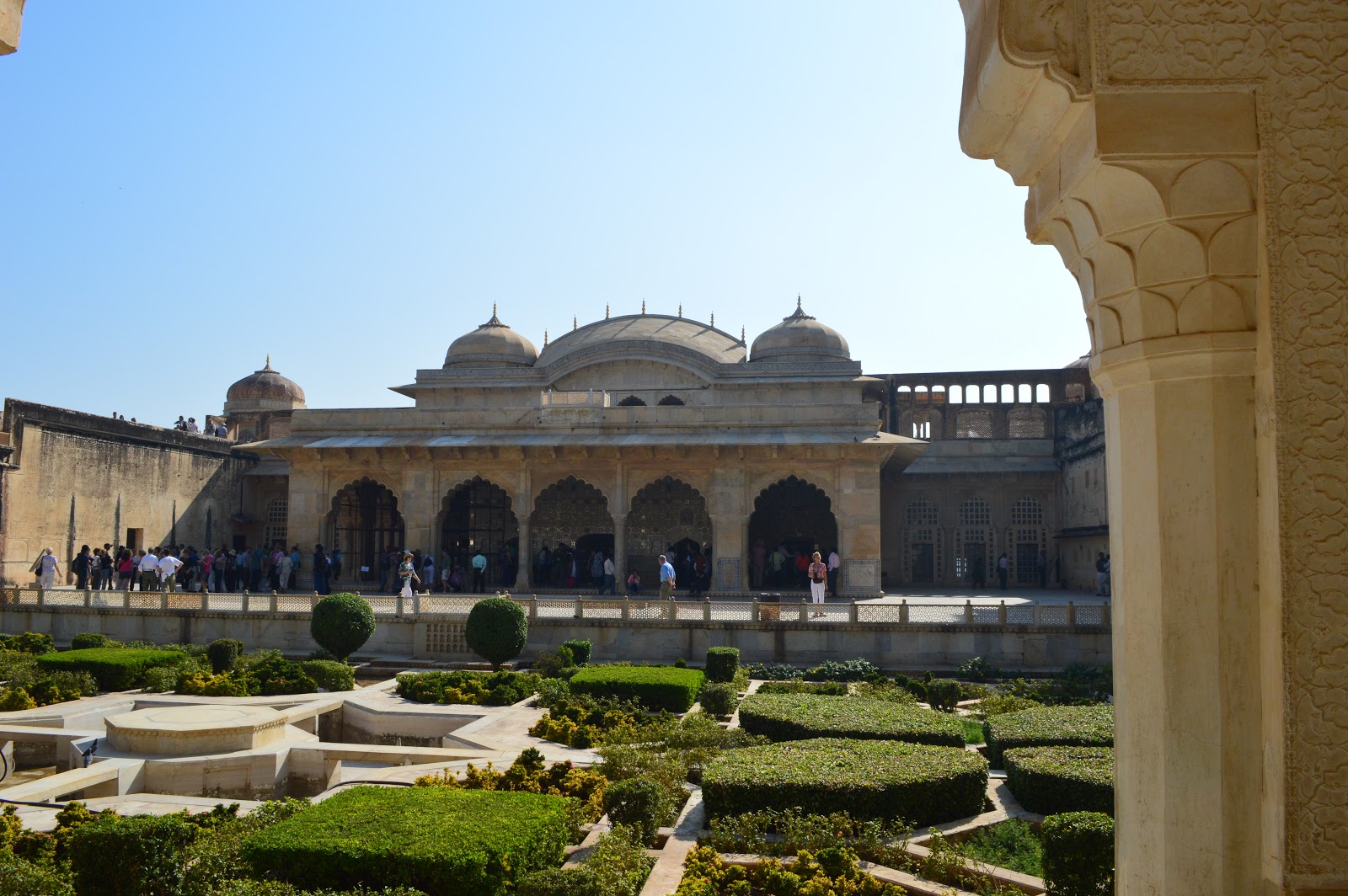After leaving Delhi, we headed west and south, into Rajasthan, to the area around Jaipur, the second leg in our "Golden Triangle" tour. It felt good to me to be traveling through the countryside, past the rich fields and small villages, the vistas punctuated by the narrow towers of the brick making kilns. Recognizing some of the crops made me want to know more about those that I did not know. What are they growing?
 |
| Amber Fort - on the way in. |
The Amber fort, was our first stop in the Jaipur. It is not named for the color, but rather for the town of Amer, and so is also known as the Amer fort. We had the opportunity to ride an elephant up to the fort, but choose not to wait the hour or two. I think most of us felt a little sorry for the elephants as well, though we were assured that they were limited to two or three trips each.
 |
| Part of the fort - note the screen area above . |
The fort itself is a great example of Rajput architecture, engineering, and artistry. The marble and red sandstone courtyards and the fine craftsmanship really are stunning, and the clever uses of water to cool and refresh are amazing.
 |
| Garden and hall of mirrors within the fort - elaborated channels to water the garden. |
In the town of Jaipur itself (also known as the pink city), we saw two more significant places: the City Palace, and the astronomical observatory or Jantar Mantar.
Like many of the forts and palaces in Rajastan, the City Palace is really a complex of palaces and courtyards, elaborately decorated. It was (and is) the residence of the Maharajas of Jaipur, the first part built between 1729 and 1732. Lots of interesting things in the museum and incredible details in the ornamentation of the gates.
 |
| Detail from one of four main gates to City Palace courtyard |
The Jantar Mantar was a neat combination of science and architecture. The massive sundials and observational structures are pretty impressive. From the wikipedia article: "The observatory consists of fourteen major geometric devices for measuring time, predicting eclipses, tracking stars' location as the earth orbits around the sun, ascertaining the declinations of planets, and determining the celestial altitudes and related ephemerides."
 |
| The largest Sundial in the world - shadow on the curve tells time in 15 second increments. |
Very worthwhile visit, enhanced by good company and food - we even did a little shopping.
 |
| Learning how carpets are made. A look of concentration. |
No comments:
Post a Comment